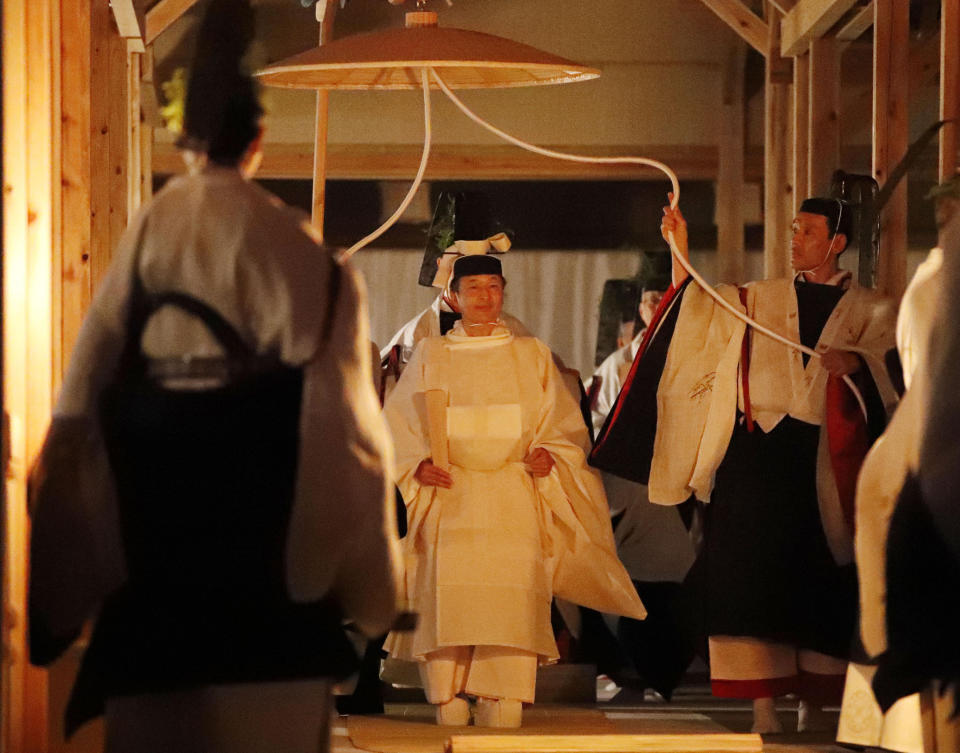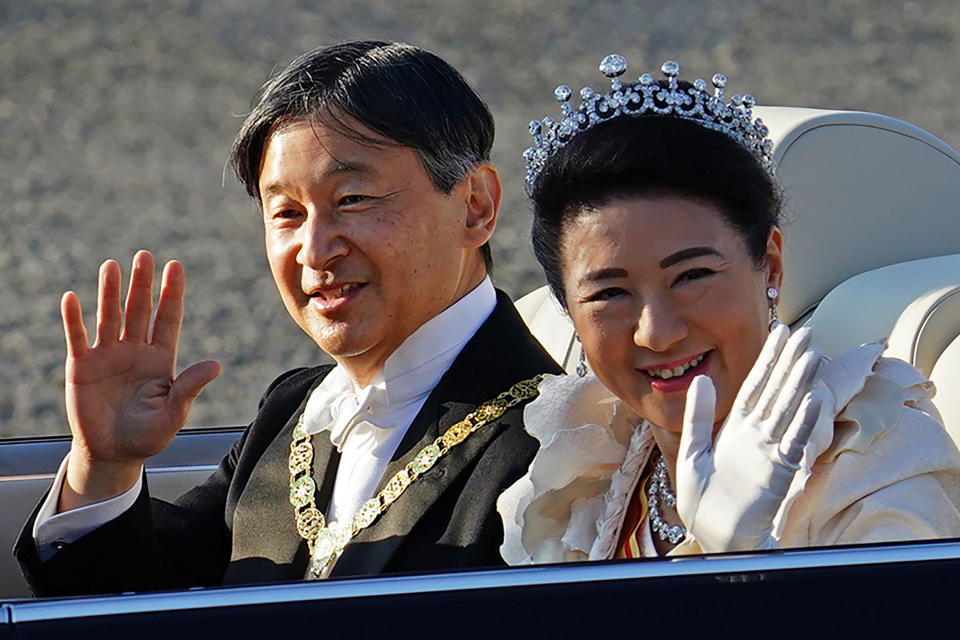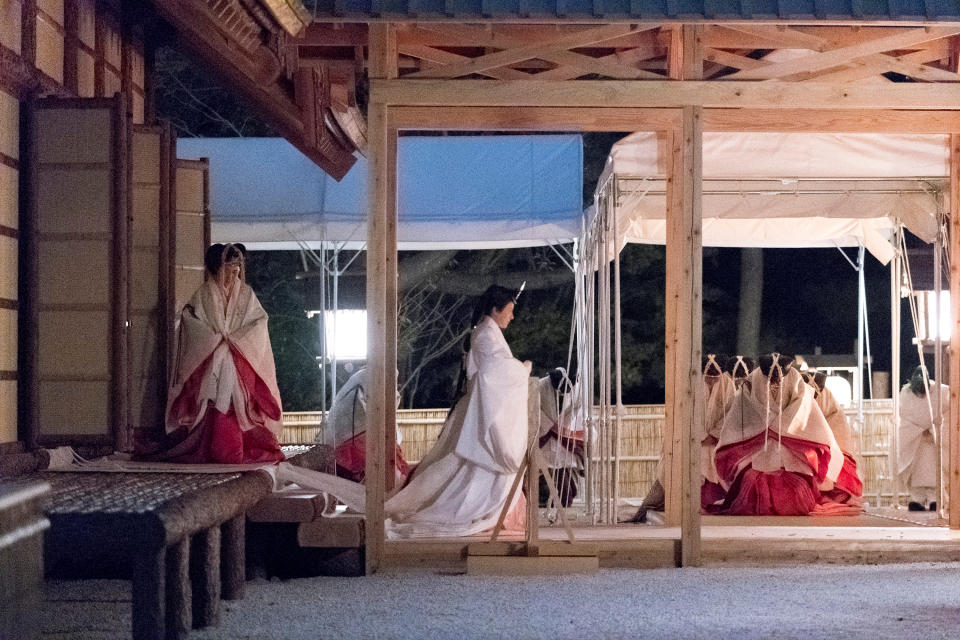'Conjugal relations': Leader's bizarre $36 million ritual that has enraged a country
Japanese Emperor Naruhito, dressed in pure white robes, was ushered into a dark wooden hall by torchlight on Thursday night to start his last major accession rite after becoming emperor this spring, spending the night with a goddess.
The "Daijosai" rite centres around Amaterasu Omikami, the sun goddess from whom the nation’s conservatives believe the emperor is descended.
It is the most overtly religious of the series of rituals marking Naruhito's taking over after his father Akihito's abdication.
The rite, which lasts until early Friday morning, has prompted lawsuits from critics ranging from Communists to Christians, who say it smacks of the militaristic past and violates the constitutional separation of church and state since the government pays the 2.7 billion yen (A$36 million) cost.

Legend has it that the emperor has “conjugal relations” with the goddess, a view put forth in pre-World War Two textbooks, an era when the emperor was considered divine. Naruhito's grandfather Hirohito, in whose name Japan fought the war, was stripped of his divinity after Japan lost.
Today scholars and the government say the rite involves sharing a meal of dishes from across Japan to seal the emperor's new status.
"This ritual is basically a feast involving the sun goddess and the emperor," said John Breen, professor at the International Research centre for Japanese Studies, Kyoto, who notes that most coronations have mystical elements.


"The emperor is transformed by partaking of this feast."
Preparations began months ago, with the construction of a special shrine compound within the palace grounds and, later, the harvest of rice from two fields chosen by heating a turtle shell and reading the pattern of cracks.
As an unseasonably warm night fell over Tokyo courtiers in traditional robes began to gather and dignitaries, including Prime Minister Shinzo Abe, gathered at an outdoor pavilion.
Soon after, in scenes broadcast live by most television stations, the emperor, shielded by a ceremonial umbrella and preceded by courtiers holding torches, was ushered through dark wooden corridors. He was followed by Empress Masako, in 12-layered white robes.
After disappearing behind white curtains into a dimly-lit room, kneeling by the side of piled straw mats draped in white, the emperor - accompanied only by two shrine maidens - began arranging offerings on 32 plates made of oak leaves for the sun goddess before bowing and praying for the peace of Japan.

He and the goddess were set to symbolically share rice, millet and rice wine before the roughly two-and-a-half hour ritual ends. It will then be repeated in a different shrine building, with everything finishing around 3.00am on Friday.
‘Merging religion and state isn’t good’
Critics note that while a Daijosai existed more than 1,000 years ago, the current ritual largely took its form in the late 1800s, as Japan sought to unite the nation around the emperor.
Koichi Shin, 60, and head of a group suing to ban the ritual, said the rite's nationalistic underpinnings are one reason for their opposition. Another is using public funds to stage it - a complaint echoed by the emperor's younger brother, Crown Prince Akishino, who said the imperial family's private funds should be used, mandating a smaller rite.
Shin said objections to the Daijosai and other imperial rites were fewer than in 1990, when Akihito ascended the throne, with press coverage less critical and fewer protests. In 1990, 1,700 people sued the government compared to 318 this time.
"We don't expect good results," Shin said.
"But we think it's important to use everything we can to get across the idea that merging religion and state isn't good."
Do you have a story tip? Email: newsroomau@yahoonews.com.
You can also follow us on Facebook and Twitter, download the Yahoo News app from the App Store or Google Play and stay up to date with the latest news with Yahoo’s daily newsletter. Sign up here.


